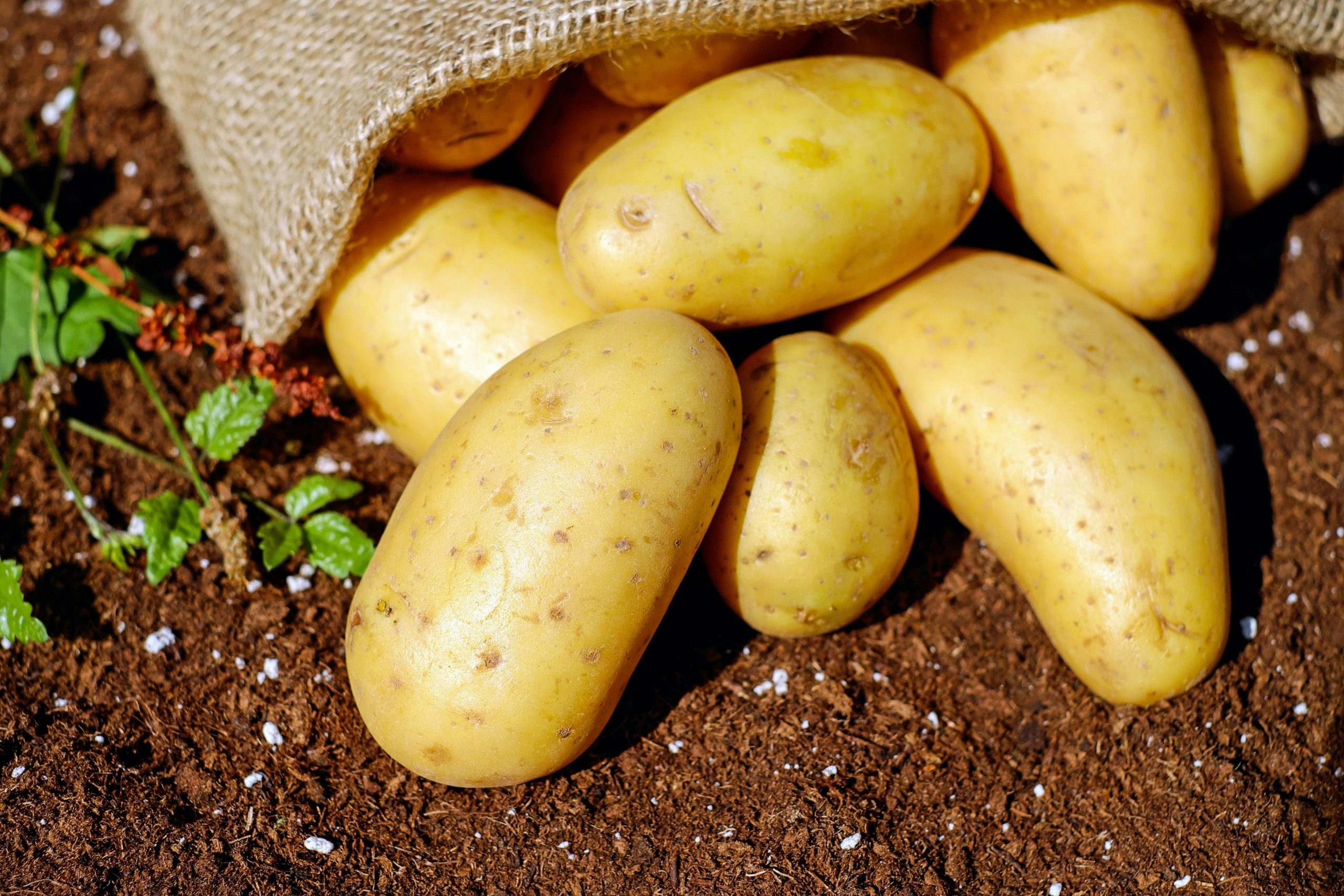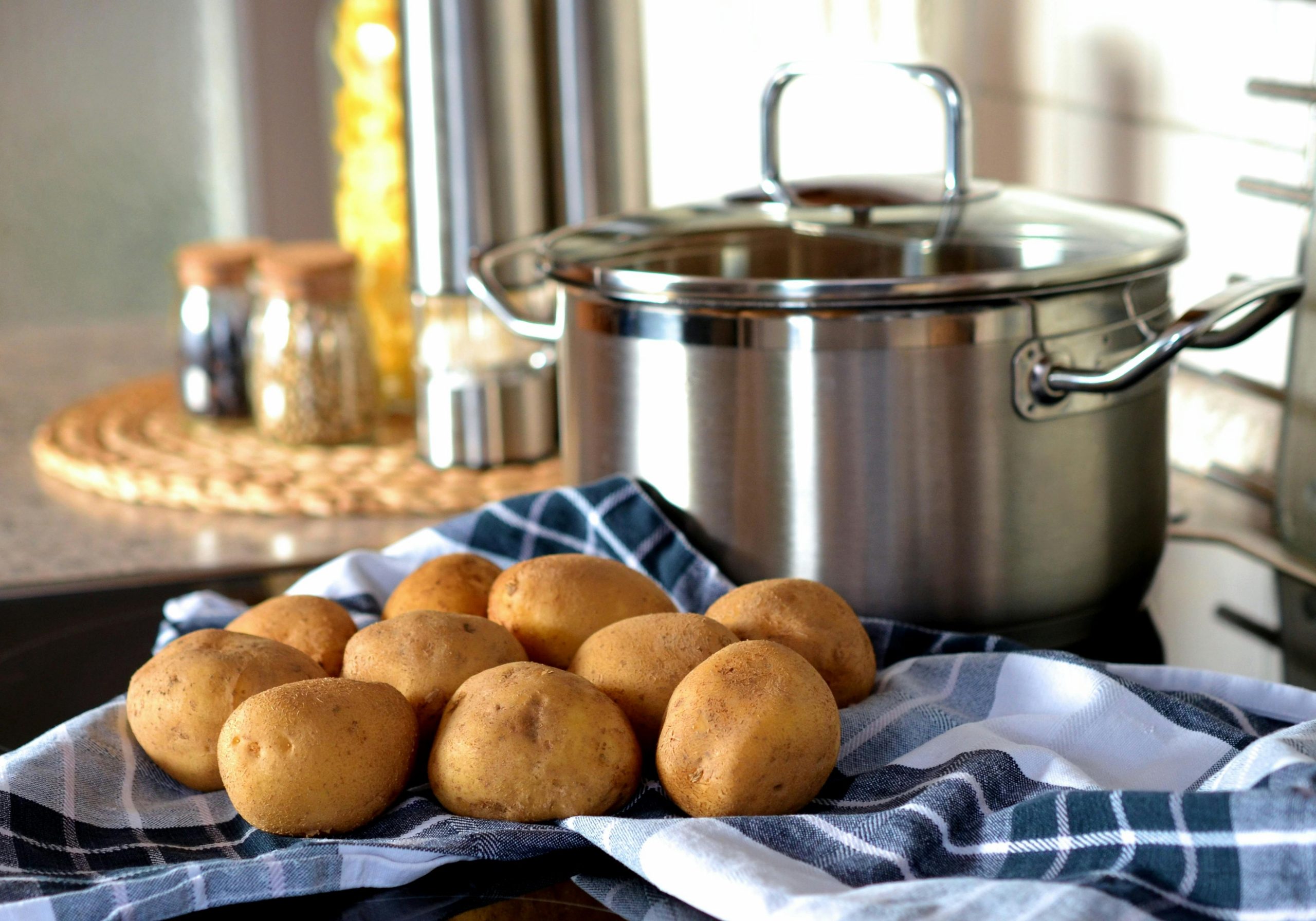Potatoes are a staple in many households — mashed, baked, fried, or roasted. But what if you eat them raw? While some people might nibble on uncooked potatoes out of curiosity or for their crunch, doing so isn’t generally recommended. Raw potatoes can carry potential health risks, taste unpleasantly bitter, and may even lead to digestive discomfort.
This article explains why eating raw potatoes isn’t ideal, the possible side effects, and how to prepare them safely.
Understanding What’s in Raw Potatoes

Raw potatoes contain several natural compounds that change when cooked. Cooking not only improves taste and texture but also helps neutralize substances that can be harmful or hard to digest.
Key Compounds in Raw Potatoes:
- Starch: Raw potato starch is resistant to digestion and can cause bloating or gas.
- Solanine: A natural toxin found mainly in green or sprouted potatoes that can lead to nausea or other symptoms if eaten in large amounts.
- Vitamin C and Potassium: Potatoes are rich in nutrients, but most become more digestible after cooking.
Cooking breaks down resistant starch and reduces solanine levels, making potatoes safer and more enjoyable to eat.
Why Eating Raw Potatoes Can Be Harmful
While eating a small bite of raw potato might not cause immediate harm, regularly consuming raw or undercooked potatoes can lead to health problems. This is mainly due to the presence of natural toxins, difficult-to-digest starches, and their unpleasant texture and flavor. Understanding these risks can help you make safer food choices and enjoy potatoes the way they’re meant to be — cooked and delicious.
- Risk of Solanine Poisoning
One of the main reasons raw potatoes are unsafe to eat is solanine, a naturally occurring glycoalkaloid toxin found in all potatoes. Solanine acts as a natural pesticide for the plant, protecting it from insects and disease. However, when consumed by humans in large amounts, it can be toxic.
- Solanine concentrations are highest in green or sprouted potatoes, especially in the skin, sprouts, and areas exposed to sunlight.
- Even small amounts of solanine can irritate the stomach and intestines, leading to uncomfortable symptoms.
- High levels of solanine can cause:
- Nausea and vomiting
- Abdominal cramps
- Headaches and dizziness
- Diarrhea or gastrointestinal distress
- In severe cases, neurological symptoms like confusion or slowed breathing
To stay safe, always inspect potatoes before use. Discard any that are green, shriveled, or sprouting eyes. Peeling and cooking can reduce solanine levels, but it doesn’t remove the toxin completely if the potato is heavily affected.
- Digestive Issues
Another concern with eating raw potatoes is their high resistant starch content. Resistant starch acts like fiber in the body and isn’t easily broken down during digestion.
- When eaten raw, this starch passes through your intestines largely unchanged.
- This can lead to bloating, cramping, gas, and discomfort, especially for people with sensitive stomachs.
- Cooking changes the chemical structure of starch, making it easier for your body to digest and convert into energy.
Interestingly, if you cook and then cool potatoes, some of that starch becomes resistant again — but in a much safer, beneficial way. This cooled starch can actually feed healthy gut bacteria and support digestion without causing the problems that raw starch does.
- Unpleasant Taste and Texture
Aside from health concerns, there’s also the simple matter of taste. Raw potatoes don’t taste good — they have a chalky, starchy texture and a slightly bitter flavor that most people find off-putting.
- Raw potatoes contain compounds that can make them taste bitter or metallic.
- Their firm texture can also be hard on your teeth and difficult to chew.
- Cooking transforms these dense, bland tubers into soft, flavorful foods by breaking down starches and caramelizing natural sugars.
That’s why baked, mashed, or roasted potatoes are so much more appealing — cooking enhances their natural sweetness and creates that comforting aroma and taste we associate with hearty meals.
In short: While eating raw potatoes once in a while may not be life-threatening, it’s definitely not worth the risk or the unpleasant experience. Cooking potatoes properly not only eliminates potential toxins like solanine but also improves digestibility and flavor, making them both safe and satisfying to enjoy.
Are There Any Benefits to Eating Raw Potatoes?
Although it’s not recommended, a few potential benefits are sometimes cited. However, these come with important caveats.
Possible Benefits (and the Catch):
- Resistant Starch: Some nutrition enthusiasts promote raw potatoes for their resistant starch, which may support gut health.
- Caution: It’s difficult to digest, and other foods (like cooked and cooled potatoes, green bananas, or oats) offer safer sources.
- Vitamin C Content: Cooking can reduce vitamin C levels slightly, but the difference is minimal compared to the health risks of eating raw potatoes.
- Natural Antioxidants: Raw potatoes contain antioxidants like polyphenols, but these are also present in cooked forms.
In short, the risks outweigh the benefits when it comes to eating raw potatoes.
How Cooking Makes Potatoes Safer

Cooking potatoes does more than just improve their taste — it fundamentally changes their chemical makeup to make them safe to eat.
What Cooking Does:
- Breaks down starch, making it easier to digest.
- Reduces solanine levels, lowering the risk of toxicity.
- Enhances flavor and texture, giving potatoes their soft, fluffy interior and golden crust.
- Increases nutrient absorption, especially for minerals like iron and potassium.
Best Cooking Methods:
- Boiling: Retains most nutrients and keeps potatoes soft.
- Baking: Concentrates flavor and provides a crispy skin.
- Roasting: Adds a rich, caramelized texture.
- Steaming: Preserves vitamins and minerals with minimal nutrient loss.
Each method helps eliminate the risks associated with raw potatoes while enhancing their natural goodness.
Can You Eat Raw Sweet Potatoes?
Sweet potatoes differ from regular potatoes — they contain less solanine and have a slightly sweeter, more palatable taste when raw. However, raw sweet potatoes can still cause digestive discomfort.
Key Differences:
- No Solanine: Sweet potatoes are free of glycoalkaloid toxins, making them less risky.
- Still Hard to Digest: The starch content can still lead to bloating if consumed raw.
- Better When Cooked: Cooking brings out beta-carotene (vitamin A) and enhances digestibility.
Bottom Line: While raw sweet potatoes are safer than raw white potatoes, it’s still best to cook them for optimal taste and nutrition.
Safe Ways to Enjoy Potatoes
If you want to enjoy the nutritional benefits of potatoes safely, here’s how to prepare and store them properly:
Safe Preparation Tips:
- Peel or scrub thoroughly to remove dirt and pesticide residues.
- Cut away green or sprouted areas — they contain the most solanine.
- Avoid eating raw or undercooked potatoes. Always cook them until soft.
- Store in a cool, dark place to prevent sprouting and toxin buildup.
Healthy Cooking Ideas:
- Oven-roasted potatoes with olive oil and herbs.
- Mashed potatoes with garlic and butter.
- Baked potato with low-fat toppings.
- Steamed baby potatoes tossed in olive oil and lemon juice.
These methods preserve nutrients while keeping your meals safe and satisfying.
What Happens If You Accidentally Eat Raw Potato?
Accidentally eating a small bite of raw potato — for example, while preparing food — is usually harmless. However, it can cause minor stomach upset for some people.
If You Experience Symptoms:
- Mild discomfort: Drink water and monitor for any nausea or cramps.
- Persistent symptoms: If you feel sick, contact your doctor or poison control center, especially if the potato was green or sprouted.
- Prevent future issues: Always check potatoes for green spots before use and cook thoroughly.
The Science Behind Solanine
Solanine acts as a natural defense mechanism for potatoes against insects and predators. It’s found mostly in the skin, sprouts, and green parts of the potato.
Important Facts About Solanine:
- Cooking reduces, but doesn’t completely remove it.
- Exposure to light or damage (like bruising) increases solanine levels.
- The bitter taste of green potatoes often signals high solanine content.
Safety Tip: If your potato tastes bitter or looks green — don’t eat it, even after cooking.
Fun Fact: Historical Cases of Potato Poisoning
In rare cases, people have gotten sick from eating large quantities of raw or green potatoes. For example:
- During food shortages in the past, populations that relied heavily on raw or sprouted potatoes experienced symptoms of solanine poisoning.
- Modern food safety practices have greatly reduced this risk, but it’s a reminder that proper storage and preparation are essential.
Why Cooking Is Always Recommended
Cooking not only eliminates toxins but also maximizes nutrition. For instance, boiled or baked potatoes retain potassium and fiber, while frying may reduce their health benefits.
If you’re exploring ways to eat potatoes for better health or digestion, focus on cooking methods that use minimal oil and preserve nutrients.
Final Thoughts
While potatoes are a nutritious and versatile food, eating them raw is not recommended. The risks of solanine toxicity, digestive issues, and unpleasant taste outweigh any potential benefits.
Cooking potatoes thoroughly makes them:
- Safer by reducing toxins and hard-to-digest starch.
- Tastier with improved flavor and texture.
- More nutritious through enhanced absorption of key vitamins and minerals.
So, next time you reach for a raw slice of potato, remember: a little heat goes a long way in making this humble root vegetable safe and delicious.